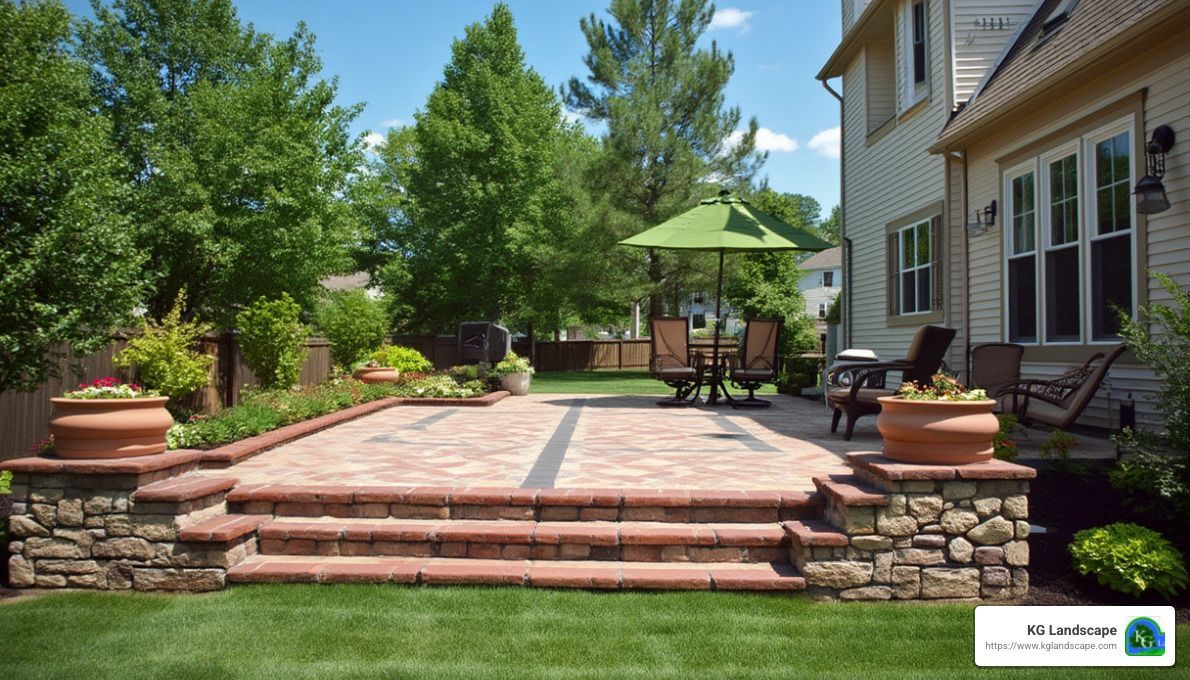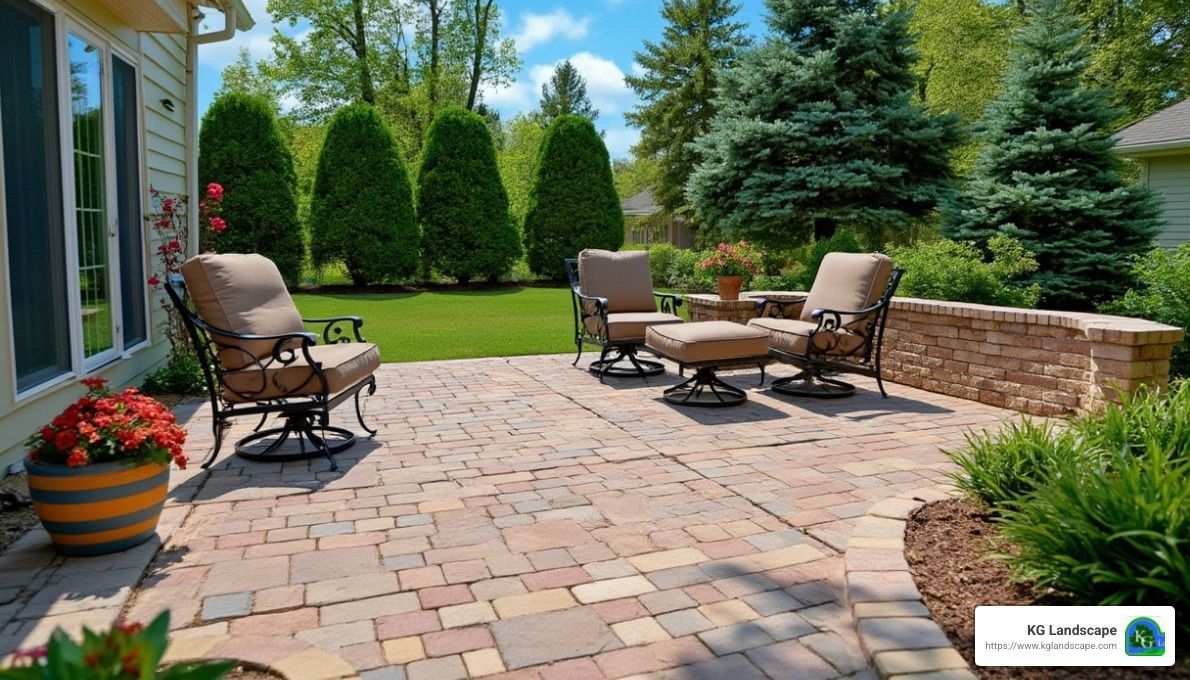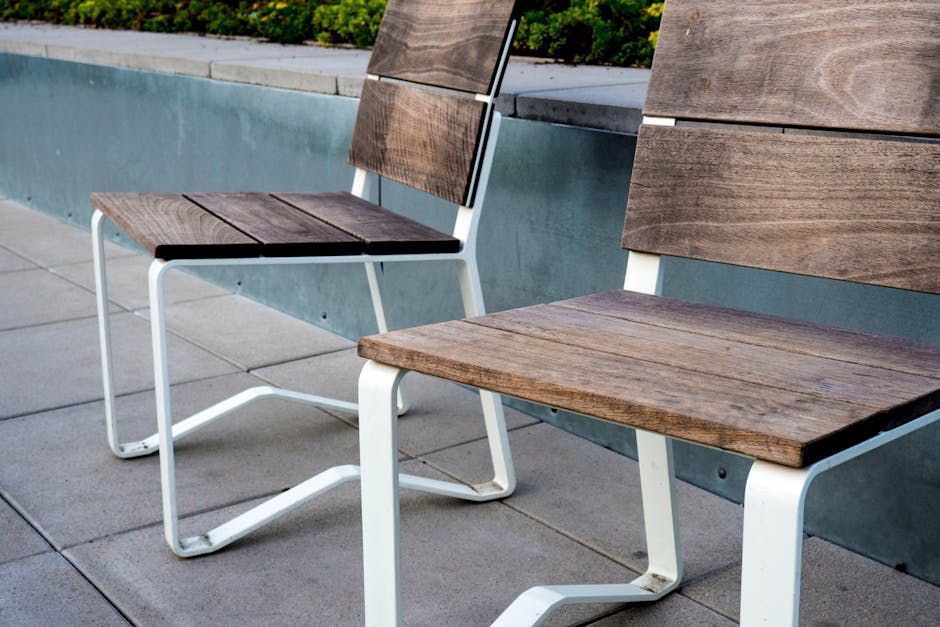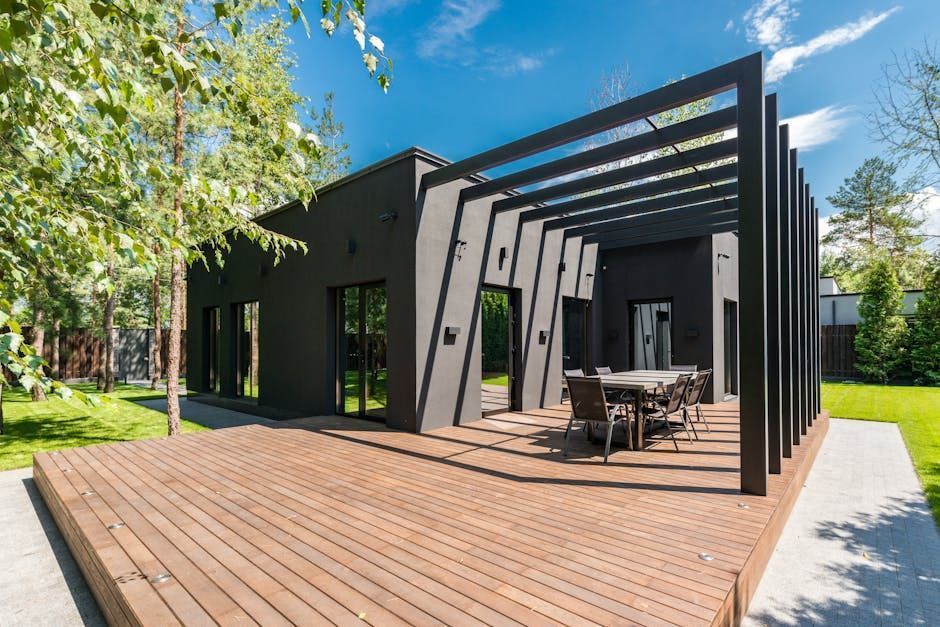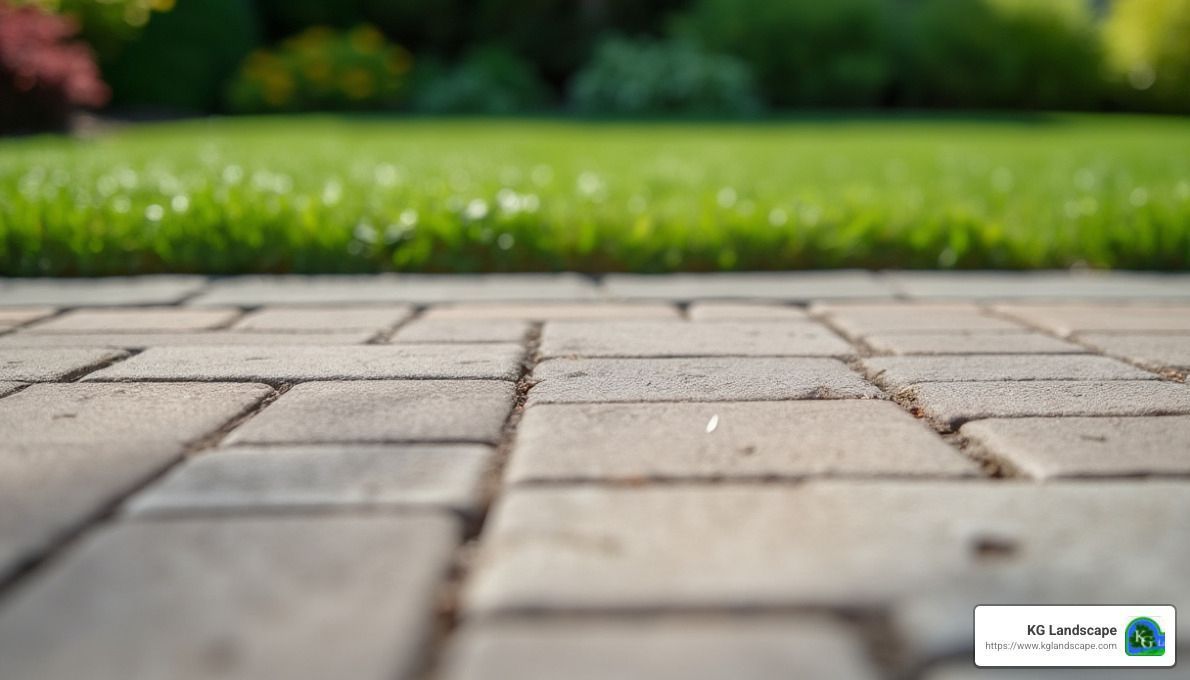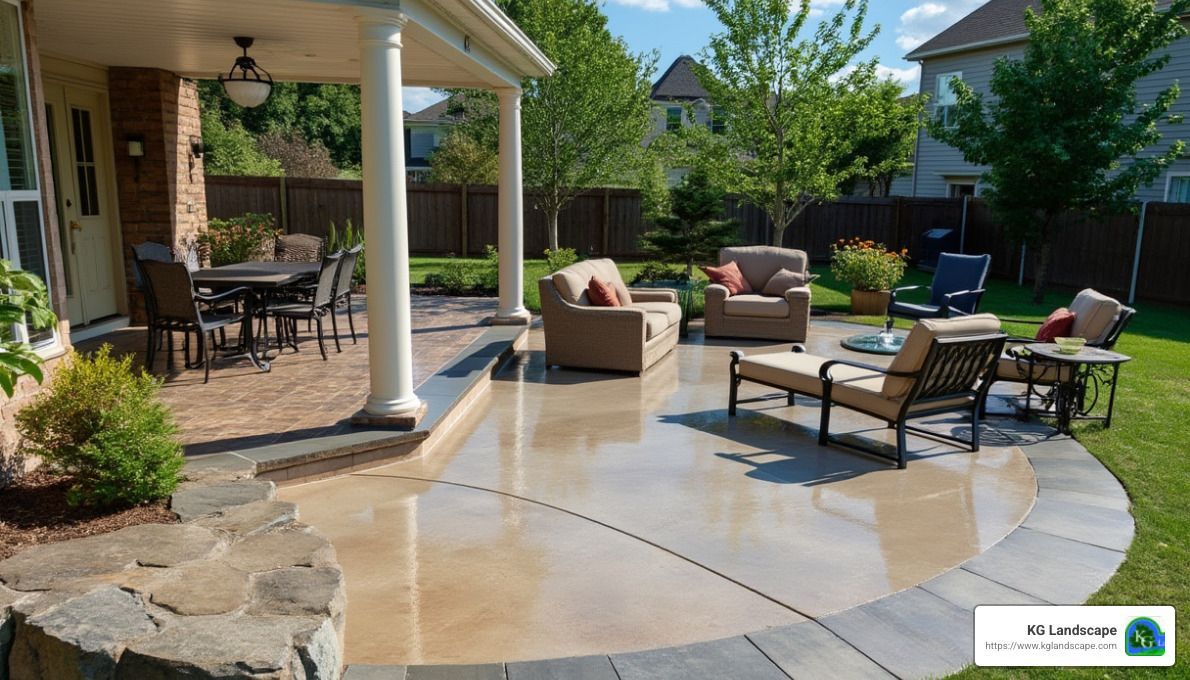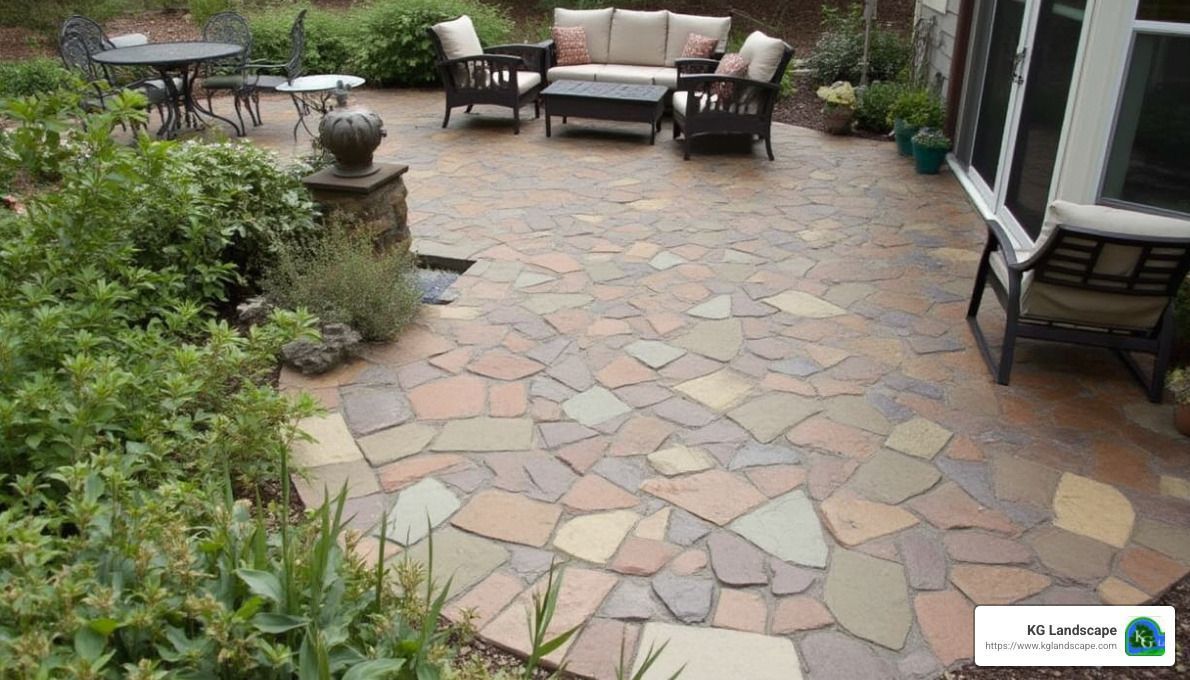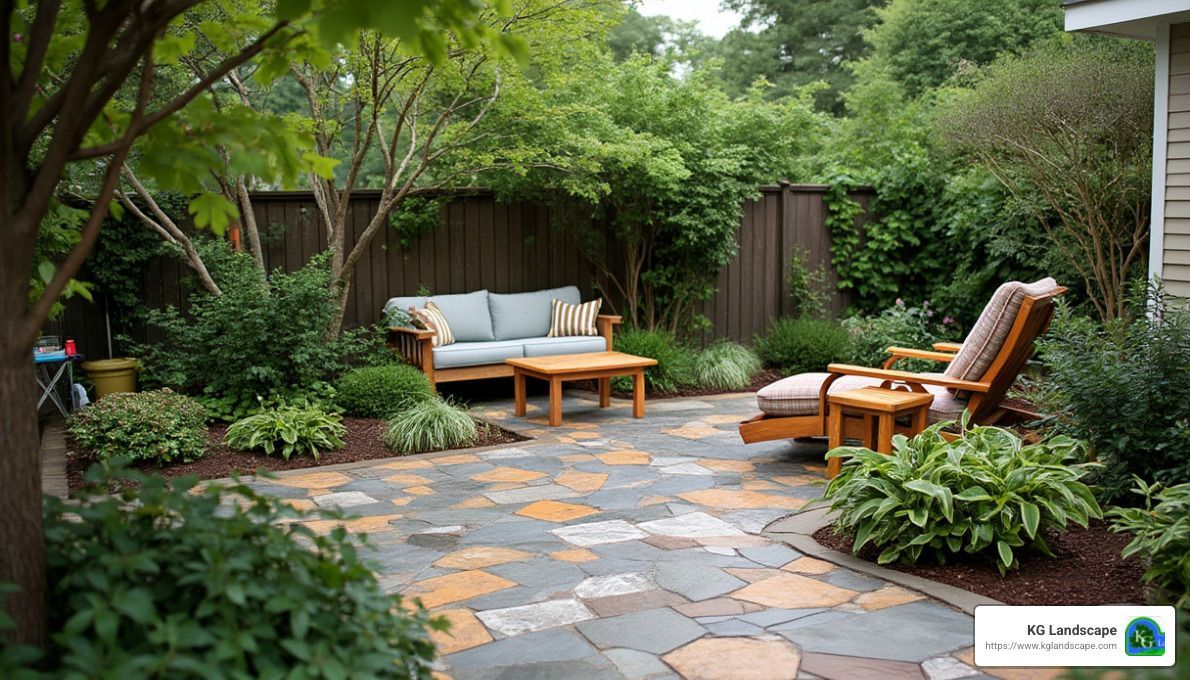Yard Drains: The Ultimate Product Roundup for Effective Drainage
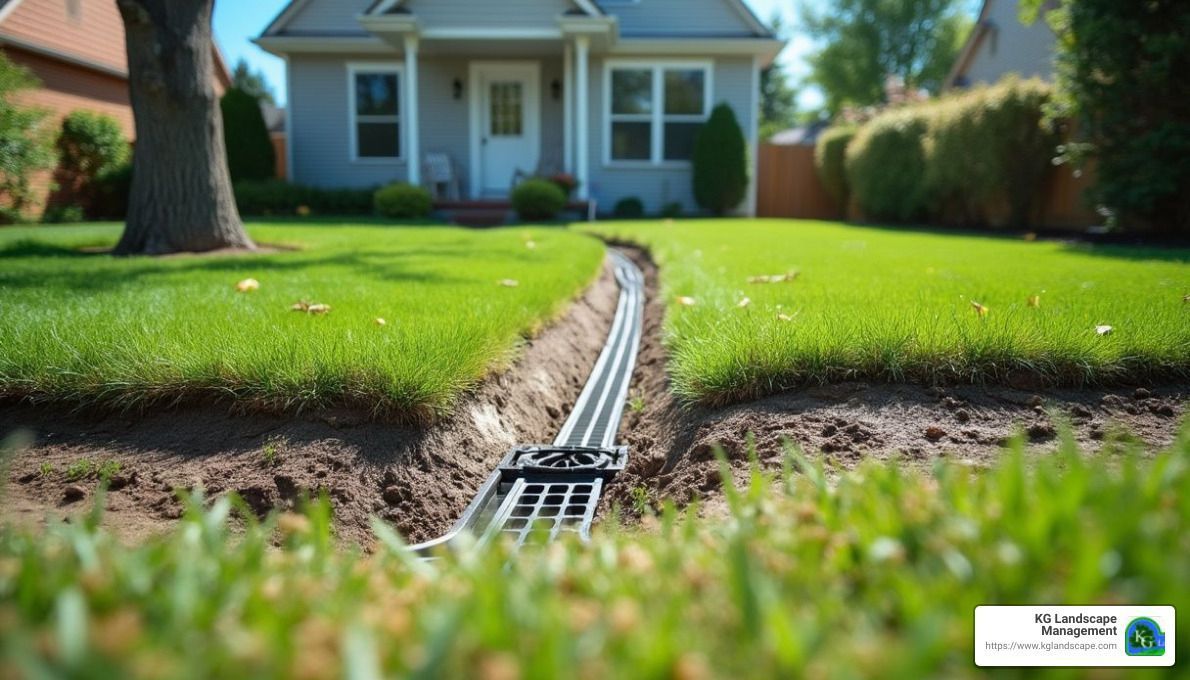
Yard drain solutions are essential for homeowners looking to protect their property from water damage while enhancing curb appeal. Poor yard drainage can lead to various issues, such as standing water, foundation damage, and soggy lawns. Fortunately, there are several effective methods to improve drainage that are both simple and affordable.
Effective yard drainage ensures your property remains beautiful, functional, and safe. Whether you're dealing with water pooling on the lawn or creeping towards your home's foundation, finding the right solution is vital to prevent damage and maintain the longevity of your landscape.
As one satisfied customer puts it, by addressing drainage issues with the right solutions, "we have not a drop of water make it into the garage" even after heavy rains.
Let's explore the ultimate solutions for effective yard drainage that can transform your outdoor space into a well-drained and inviting environment.
Each type of yard drain offers unique benefits and can be custom to fit the specific needs of your landscape. By choosing the right drainage solution, you can protect your property from water damage and enjoy a healthier, more functional outdoor space.
Benefits: These basins are excellent for preventing surface water buildup and can be connected to stormwater systems for efficient drainage. They are versatile and can be used in various areas like patios, driveways, and lawns.
Maintenance: Regularly clearing debris from the grate is vital to keep the system working efficiently. Routine checks ensure the outlet pipes remain unclogged.
Installation: Bury the perforated pipe in a trench filled with gravel. The gravel helps filter water into the pipe, which then redirects it away from problem areas.
Materials: The key materials include a perforated pipe and coarse gravel, which work together to ensure effective water collection and redirection.
Gravel and water collection: Filled with gravel, dry wells facilitate gradual water dispersion, reducing the risk of erosion and runoff. They are perfect for stormwater management.
Benefits: They help prevent yard erosion and manage excess water without visible structures disrupting the landscape.
Installation: These drains involve digging a trench and fitting a long, narrow grate that directs water into a connected drainage system.
Benefits: They prevent water from pooling on surfaces and entering garages or basements, making them essential for areas with heavy rainfall.
Benefits: Swales not only manage water effectively but also add aesthetic value with their natural appearance. They can be integrated with plants, grass, or rocks to blend seamlessly with your yard.
Each of these yard drain products offers distinct advantages custom to various drainage needs. By selecting the appropriate solution, you can safeguard your property from water damage and maintain a visually appealing outdoor space.
Grading and Soil Types : Use a clay-like soil for grading, as it packs well and stays in place. Avoid using topsoil or mulch, which can wash away easily. Ensure there's at least a 4-inch gap between the slope and your siding to prevent moisture issues.
Water Direction: Gravel surfaces not only promote better water drainage but also help direct water flow away from critical areas. This change can prevent unwanted pooling and reduce pressure on your drainage system.
Water Collection and Local Regulations: Before installing a rain barrel, check local regulations, as some areas have restrictions on rainwater collection. Once approved, position the barrel under a downspout to efficiently capture rainwater.
Lawn Health and Drainage Improvement: Regular aeration prevents soil compaction, enabling water to seep through rather than pool on the surface. Use a manual aerator or rent a machine for larger areas. Aerate during the growing season for best results.
Installation and Benefits: Install extensions that lead water at least 5 to 10 feet away from the house. This simple addition can prevent water from collecting near the foundation and reduce the risk of basement flooding.
Implementing these DIY yard drainage solutions can greatly improve your yard's ability to handle excess water. By taking these steps, you can protect your home from water damage and maintain a healthy, vibrant landscape.
Next, we'll dig into the advantages of hiring professional services for more complex drainage issues and when it might be time to call in the experts.
Working with a professional not only resolves current drainage issues but also prevents future problems, ensuring your yard remains dry and your home protected.
In the next section, we'll address some frequently asked questions about yard drains to further clarify common concerns and solutions.
These methods, individually or in combination, can significantly improve your yard's drainage, keeping it dry and healthy. Proper planning and installation are key to effective stormwater management.
Our professional services are designed to address your specific drainage challenges, ensuring that your yard remains dry and functional. From the installation of catch basins and French drains to creating dry wells and channel drains, we have the expertise to handle any drainage issue. Our solutions are not only effective but also aesthetically pleasing, blending seamlessly with your existing landscape.
We pride ourselves on delivering an excellent customer experience. Our team takes the time to educate you on the best drainage options for your property, ensuring you feel confident in your investment. We believe in transparency and communication, keeping you informed every step of the way.
For those in the Minneapolis and St. Paul area, choosing KG Landscape Management means choosing a partner committed to excellence in both service and results. Let us help you transform your yard into a space that's not only beautiful but also protected from water damage.
Ready to tackle your yard drainage issues? Contact us today and let us provide the professional solutions you need to keep your landscape in top shape.
- Drain excess water efficiently using yard drains to protect your home's foundation.
- Prevent basement flooding and maintain a dry, functional lawn.
- Improve your outdoor space's health by addressing and correcting drainage issues.
Effective yard drainage ensures your property remains beautiful, functional, and safe. Whether you're dealing with water pooling on the lawn or creeping towards your home's foundation, finding the right solution is vital to prevent damage and maintain the longevity of your landscape.
As one satisfied customer puts it, by addressing drainage issues with the right solutions, "we have not a drop of water make it into the garage" even after heavy rains.
Let's explore the ultimate solutions for effective yard drainage that can transform your outdoor space into a well-drained and inviting environment.
Types of Yard Drains
When it comes to managing water in your yard, several types of yard drains can help keep your property dry and damage-free. Let's explore the most common types and how they work.Catch Basins
Catch basins are a popular choice for capturing and redirecting excess water. Installed at low points in your yard, they collect water and debris, preventing it from pooling on the surface. These basins are connected to underground pipes, which channel the water away from your home. Regular maintenance, such as clearing debris from the grate, keeps them functioning efficiently.French Drains
French drains are a cost-effective solution for areas with persistent water issues. These drains consist of a perforated pipe buried in a trench filled with gravel. The design allows water to enter the pipe and flow away from problem areas. They're ideal for soggy lawns and can be installed relatively easily by a DIY enthusiast. However, ensuring the proper slope and avoiding utility lines is crucial.Dry Wells
Dry wells are underground systems designed to collect and slowly disperse water into the surrounding soil. They are typically filled with gravel to allow water to seep out gradually, reducing erosion and runoff. Dry wells are an excellent option for managing stormwater and preventing it from eroding your yard.Channel Drains
Channel drains, also known as trench drains, are perfect for hardscape areas like driveways and walkways. They consist of a long, narrow grate that collects surface water and directs it into a drainage system. Channel drains are especially useful for preventing water from entering garages or pooling on patios.Swales
Swales are shallow, vegetated channels that manage water through landscaping. They guide water away from structures and towards designated drainage areas. Swales not only improve drainage but also improve the aesthetic appeal of your yard. They can be lined with grass, plants, or rocks to blend seamlessly with your landscape.Each type of yard drain offers unique benefits and can be custom to fit the specific needs of your landscape. By choosing the right drainage solution, you can protect your property from water damage and enjoy a healthier, more functional outdoor space.
Top Yard Drain Products for Effective Drainage
When it comes to tackling yard drainage, having the right tools is key. Here's a breakdown of the top products that can make a significant difference in managing water around your property.Catch Basins
Installation: Catch basins are a straightforward installation at the lowest points of your yard. They collect surface water and debris, channeling it into underground pipes. This prevents pooling and protects your landscape.Benefits: These basins are excellent for preventing surface water buildup and can be connected to stormwater systems for efficient drainage. They are versatile and can be used in various areas like patios, driveways, and lawns.
Maintenance: Regularly clearing debris from the grate is vital to keep the system working efficiently. Routine checks ensure the outlet pipes remain unclogged.
French Drains
Cost-effective: French drains are a budget-friendly option for persistent water issues. They require minimal materials: a perforated pipe, gravel, and some elbow grease.Installation: Bury the perforated pipe in a trench filled with gravel. The gravel helps filter water into the pipe, which then redirects it away from problem areas.
Materials: The key materials include a perforated pipe and coarse gravel, which work together to ensure effective water collection and redirection.
Dry Wells
Underground system: A dry well acts as an underground reservoir, capturing excess water and allowing it to seep slowly into the surrounding soil.Gravel and water collection: Filled with gravel, dry wells facilitate gradual water dispersion, reducing the risk of erosion and runoff. They are perfect for stormwater management.
Benefits: They help prevent yard erosion and manage excess water without visible structures disrupting the landscape.
Channel Drains
Driveways and walkways: Channel drains are ideal for hardscape areas, capturing water from surfaces like driveways and walkways.Installation: These drains involve digging a trench and fitting a long, narrow grate that directs water into a connected drainage system.
Benefits: They prevent water from pooling on surfaces and entering garages or basements, making them essential for areas with heavy rainfall.
Swales
Landscaping and water management : Swales are shallow, vegetated channels that naturally guide water away from structures. They are a sustainable drainage solution that improves the landscape.Benefits: Swales not only manage water effectively but also add aesthetic value with their natural appearance. They can be integrated with plants, grass, or rocks to blend seamlessly with your yard.
Each of these yard drain products offers distinct advantages custom to various drainage needs. By selecting the appropriate solution, you can safeguard your property from water damage and maintain a visually appealing outdoor space.
DIY Yard Drainage Solutions
When it comes to managing water in your yard, there are several DIY solutions you can implement without breaking the bank. Let's explore some effective techniques to improve yard drainage.Slope the Ground Away From the House
One of the simplest and most effective ways to improve drainage is to slope the ground away from your house. This method involves grading the soil so that water naturally flows away from the foundation, reducing the risk of basement leaks and foundation damage.Grading and Soil Types : Use a clay-like soil for grading, as it packs well and stays in place. Avoid using topsoil or mulch, which can wash away easily. Ensure there's at least a 4-inch gap between the slope and your siding to prevent moisture issues.
Replace Hardscapes With Drainage Materials
Hard surfaces like concrete driveways and patios can redirect water toward your home. Consider replacing these with gravel or pea gravel, which allows water to seep through and disperse evenly.Water Direction: Gravel surfaces not only promote better water drainage but also help direct water flow away from critical areas. This change can prevent unwanted pooling and reduce pressure on your drainage system.
Install a Rain Barrel
Rain barrels are an eco-friendly way to manage excess water from downspouts. By collecting rainwater, you can reduce runoff and use the stored water for gardening.Water Collection and Local Regulations: Before installing a rain barrel, check local regulations, as some areas have restrictions on rainwater collection. Once approved, position the barrel under a downspout to efficiently capture rainwater.
Aerate Your Lawn
Lawn aeration is a vital practice for promoting healthy grass and improving drainage. Aerating involves perforating the soil to allow air, water, and nutrients to penetrate the roots.Lawn Health and Drainage Improvement: Regular aeration prevents soil compaction, enabling water to seep through rather than pool on the surface. Use a manual aerator or rent a machine for larger areas. Aerate during the growing season for best results.
Add Downspout Extensions
Extending your downspouts is a quick and effective way to direct water away from your home's foundation. By adding extensions, you can ensure rainwater is channeled to a safe distance.Installation and Benefits: Install extensions that lead water at least 5 to 10 feet away from the house. This simple addition can prevent water from collecting near the foundation and reduce the risk of basement flooding.
Implementing these DIY yard drainage solutions can greatly improve your yard's ability to handle excess water. By taking these steps, you can protect your home from water damage and maintain a healthy, vibrant landscape.
Next, we'll dig into the advantages of hiring professional services for more complex drainage issues and when it might be time to call in the experts.
Professional Yard Drainage Installation
While DIY solutions can be effective for minor drainage issues, there are times when calling in a professional is the best course of action. Landscaping pros and drainage contractors bring expertise, experience, and specialized equipment to tackle more complex problems.When to Call a Professional
- Persistent Water Issues: If you've tried DIY methods and still face standing water or flooding, it might be time to seek professional help. Experts can identify underlying issues that are not apparent to the untrained eye.
- Complex Terrain: Properties with uneven or complex terrain may require advanced techniques and equipment that only professionals possess. Regrading or installing advanced systems like French drains or dry wells often need precise execution.
- Structural Risks: If water is threatening your home's foundation or basement, don't wait. Immediate professional intervention is crucial to prevent costly structural damage.
- Large-Scale Projects: For extensive properties or significant drainage overhauls, professionals can design comprehensive solutions that are efficient and long-lasting.
Benefits of Hiring Landscaping Pros
- Expertise and Experience: Professionals have the know-how to assess your property and recommend the best drainage solutions custom to your needs. They can foresee potential issues and address them proactively.
- Advanced Equipment: From trench diggers to surveying tools, contractors have access to equipment that ensures precise and effective installation of drainage systems.
- Time and Effort: Hiring experts saves you time and effort. They handle everything from planning to installation, allowing you to focus on other priorities.
- Quality Assurance: With a professional installation, you can expect high-quality work that meets industry standards. This assurance often comes with warranties or service guarantees.
Working with a professional not only resolves current drainage issues but also prevents future problems, ensuring your yard remains dry and your home protected.
In the next section, we'll address some frequently asked questions about yard drains to further clarify common concerns and solutions.
Frequently Asked Questions about Yard Drains
What is a yard drain called?
A yard drain is commonly referred to as a catch basin. Catch basins are essential components in stormwater management, designed to collect and channel excess water away from your property. They act like a storm or sewer system in your yard, capturing rainwater and directing it into a larger drainage system. This helps prevent water pooling, which can lead to flooding and damage to your home's foundation.How do you run a yard drain?
Running a yard drain involves several critical steps to ensure effective water management. Here's a simple breakdown:- Trench Digging: Start by digging a trench from the area where water tends to accumulate, sloping downward to an outlet point. The trench should be deep enough to accommodate the drain pipe and allow gravity to do its job.
- Catch Basin Installation: Place a catch basin at the lowest point of the trench. This will serve as the collection point for water, directing it into the drain pipe.
- Drain Pipe Connection: Connect the drain pipe to the catch basin. Ensure the pipe runs through the trench and directs water to a safe discharge point, such as a dry well or storm sewer.
- Testing and Backfilling: Test the system to ensure water flows correctly through the pipe. Once satisfied, backfill the trench with soil, compacting it to prevent future settling.
How to get water to drain from a yard?
If you're dealing with waterlogged areas in your yard, several strategies can help improve drainage:- Aerate Lawns: Regular lawn aeration increases soil permeability, allowing water to absorb more quickly. Aeration involves perforating the soil with small holes to let air, water, and nutrients reach the roots.
- Water-Hungry Plants: Planting species that thrive on excess moisture, such as willows or red maples, can help absorb water from soggy areas.
- Channel Drains : Install channel drains across driveways or walkways to redirect water into drainage systems. These drains are especially useful in areas that experience heavy water flow.
- Regrade Yard: Sometimes, regrading the yard is necessary to ensure water flows away from your home. This involves reshaping the land to create a gentle slope, guiding water to designated drainage areas.
These methods, individually or in combination, can significantly improve your yard's drainage, keeping it dry and healthy. Proper planning and installation are key to effective stormwater management.
Conclusion
At KG Landscape Management, we understand how crucial effective yard drainage is for maintaining a beautiful and healthy outdoor space. Serving the greater Minneapolis and St. Paul metro area, our team is dedicated to providing high-quality, detail-oriented landscape solutions custom to your needs.Our professional services are designed to address your specific drainage challenges, ensuring that your yard remains dry and functional. From the installation of catch basins and French drains to creating dry wells and channel drains, we have the expertise to handle any drainage issue. Our solutions are not only effective but also aesthetically pleasing, blending seamlessly with your existing landscape.
We pride ourselves on delivering an excellent customer experience. Our team takes the time to educate you on the best drainage options for your property, ensuring you feel confident in your investment. We believe in transparency and communication, keeping you informed every step of the way.
For those in the Minneapolis and St. Paul area, choosing KG Landscape Management means choosing a partner committed to excellence in both service and results. Let us help you transform your yard into a space that's not only beautiful but also protected from water damage.
Ready to tackle your yard drainage issues? Contact us today and let us provide the professional solutions you need to keep your landscape in top shape.

